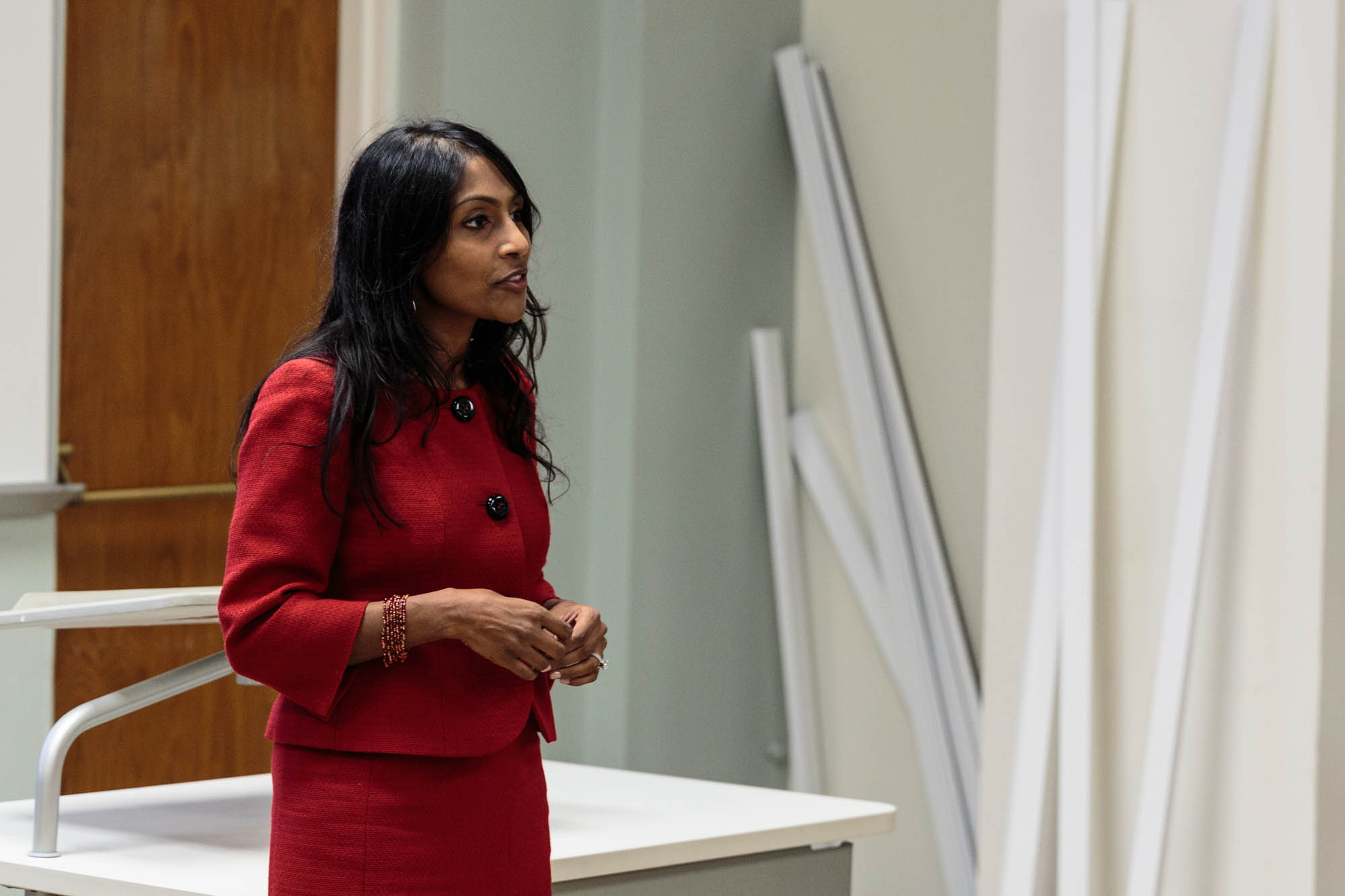Views expressed in opinion columns are the author’s own.
The New York Times published an article in 2014 titled “Glass Ceilings in Statehouses in the Northeast,” which highlighted gender disparities in the political systems of solidly blue states. The article examined the dynamics that have kept women out of the governor’s mansion, from lack of party support to voter sexism. It also pointed out the importance of the governorship in handing out patronage jobs, a fact that entrenches existing male power structures.
Four years later, little has changed, with only two female Democratic governors. Of course, many pundits predict big Democratic gains come November. Talk of the “blue wave” might stir visions of women breaking into state boys’ clubs.
But I worry that, even now, the Democratic Party is not serious about electing women to statewide office. In Maryland, we have a chance to change that.
[Read more: Democrat Krish Vignarajah becomes first woman to enter race for Maryland governor]
Maryland has never elected a woman as governor (neither has Pennsylvania, New York or Massachusetts). There are currently no women serving in Maryland’s 14 statewide and federal offices. That alone is a problem, but more than just symbolically.
In February, the Maryland Women’s Caucus released a report on sexual harassment in Annapolis. It detailed male lawmakers groping women, making inappropriate comments and creating a “fraternity house” atmosphere. The culture of our statehouse is toxic and indicative of policy that fails women. We need women in statewide office because institutional change won’t happen any other way.
But the path to becoming governor may be uniquely challenging for female candidates. The Times cited analysts who argued that voters are more comfortable with women serving in collective bodies, like Congress, than as executives.
The Times also pointed out that few women have had the desire or wealth to fund their own gubernatorial campaigns in the past. Meanwhile, businessmen like Gov. Larry Hogan lack political experience but are rich enough to lower their dependence on party resources.
The standards we place on male and female candidates are disparate, as it’s difficult to imagine a woman with little previous political experience being elected governor.
Across the country, a record number of women are running for governor this year. In Maryland, however, the field of nine Democratic contenders includes just one woman, Krish Vignarajah. She formerly served as policy director for Michelle Obama and was a senior adviser at the State Department before that. Her campaign focuses on changing policies that reflect a lack of female representation.
Vignarajah points to failed childcare and senior-care, declining schools, high rates of domestic violence and the wage gap to illustrate that claim. She also has proposed a cabinet that reflects Maryland’s gender makeup, paid family leave, improvements to maternity care and an end to the wage gap in government jobs.
She has chosen Sharon Blake, the former president of the Baltimore Teachers Union, as her running mate. This makes them the first-ever ticket of women of color. If elected, they would be the first all-female ticket to become governor and Lt. governor in the nation. They deserve to be taken seriously.
No “blue wave” can be truly progressive unless it puts power in the hands of women, especially women of color. For too long, Maryland has prided itself as forward-looking while simultaneously electing white men again and again. We should not be proud of our state’s government until it is a reflection of us all.
CORRECTION: Due to a columnist error, a previous version of this column stated that New Jersey has never elected a woman governor. New Jersey has elected a female governor. The column has been updated.
Jack Lewis is a senior government and politics major. He can be reached at jlewis20@umd.edu



